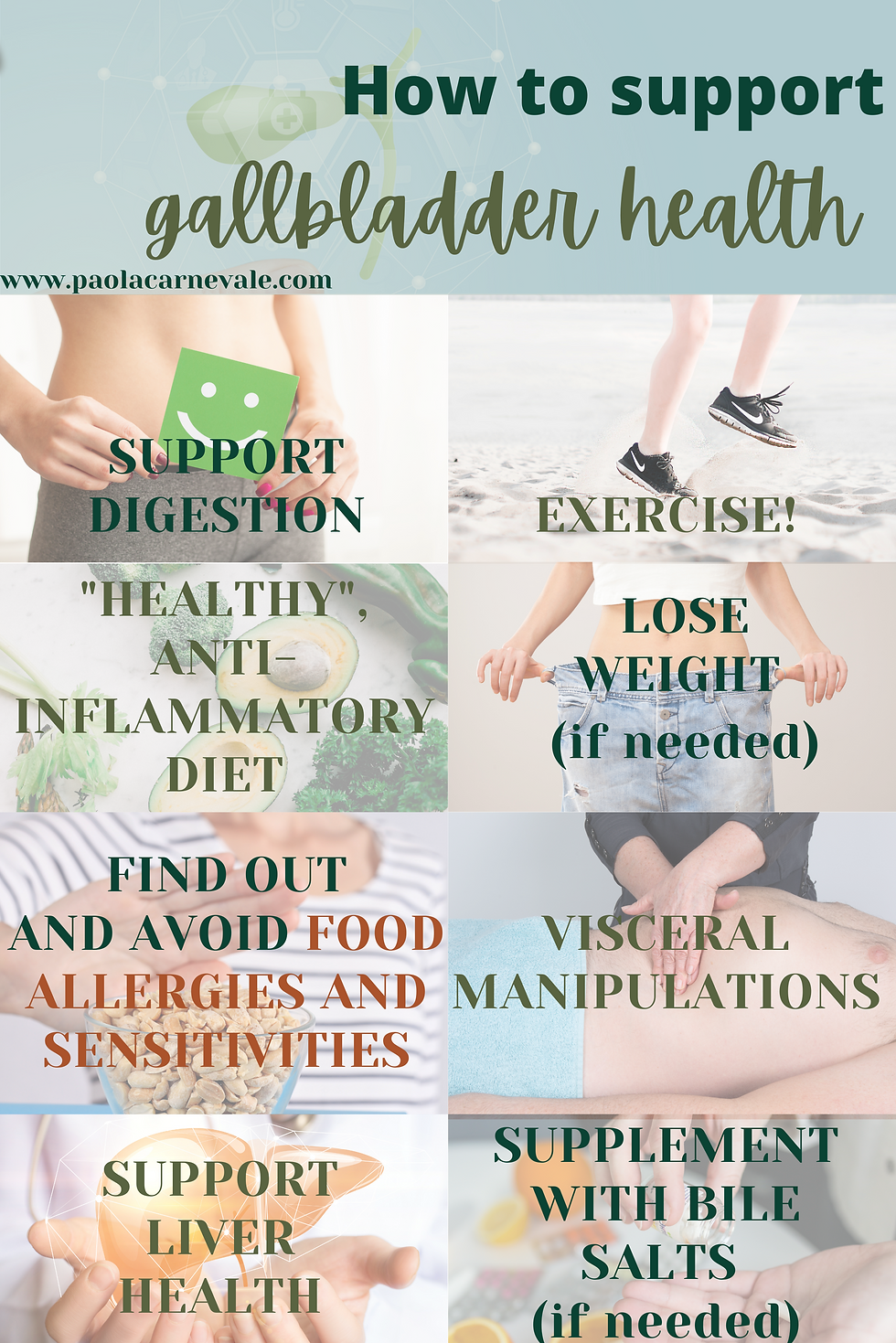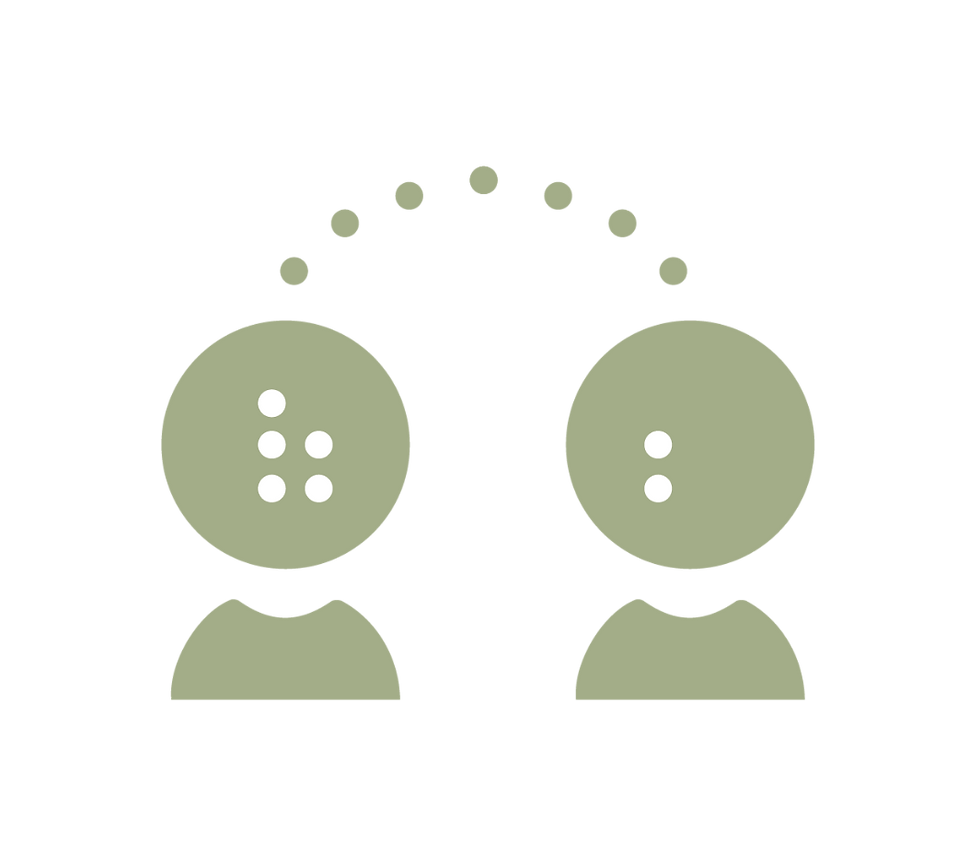Gallbladder removal or cholecystectomy is one the most commonly performed surgical procedures. I bet we all know more than someone who underwent this surgery!
It is the standard treatment for symptomatic gallstones and is also performed in cases of gallbladder polyps and inflammation. It is considered a common surgery with small risks of complications. And often it does not require a long hospital stay.
After gallbladder removal people are usually sent home with a recommendation for some type of medication to control pain, hydration and plenty of fibres (or a stool softener) to avoid getting constipated and the reassurance that they can go back to your normal diet. Easy enough, right?
So, all good? If we basically don’t need a gallbladder, why do we even have one?
Let’s explore further!
Here a list of the topics we are going to explore:
What is the gallbladder?

The gallbladder is a small pear-shaped, pouch-like organ, positioned just below the liver.
What is its main function? The gallbladder stores and concentrates bile, produced by the liver, and releases it in the common bile duct leading to the duodenum (the first part of the small intestine) when needed for fat digestion.
When we eat fat-containing food, and the acidic, fat-containing chyme enters the small intestine from the stomach, cholecystokinin (or CCK), a gut hormone and neurotransmitter, is released into the duodenum and stimulates the gallbladder and the liver to release bile in the duct.
And…what is bile and what are its functions?
Bile is a digestive fluid, produced by the liver and needed for fat digestion.
It is composed mainly of water, bile salts, phospholipids, cholesterol, bilirubin (from the breakdown of red blood cells in the liver) and electrolytes.
Bile has the main function to emulsify fats, in such a way that more surface area is exposed to the action of fat-digesting enzymes (lipase) – you can compare it to the action of soap. In this way it also helps in the absorption of fat-soluble vitamins: A, D, E, K.
But bile has other functions as well:
it is needed to eliminate cholesterol from our bodies – this is why cholesterol is one of its main components;
it helps our body get rid of metabolic wastes, excess hormones, drugs, metals and other substances [1];
bile salts also have potent antimicrobial properties which help protect the small intestine from bacterial overgrowth - The obstruction of bile flow is a major factor for bacterial overgrowth [2];
bile acids, furthermore, (through an interaction with the gut microbiota) act as signalling agents with metabolic effects and help regulate energy, glucose, lipid and lipoprotein metabolism in the liver, intestine, muscle and brown fat [2,3].
What are common gallbladder problems and symptoms?
The most common gallbladder problems are gallbladder sludge, gallbladder stones (which can lead up to gallbladder colics) and a bile reflux to the stomach.
Gallbladder sludge is a thick material, made of solids that have precipitated from bile. It is often associated with pregnancy and rapid weight loss. Symptoms of a slugglish bile might include bloating, distension, burping/belching (especially when eating fatty foods), intolerance to fatty foods, constipation, floating stools, gut dysbiosis, pain underneath the ribcage on the right side, referred pain underneath the right shoulder blade…

Gallstones can also form out of the precipitated materials. This can happen when there is a hypersecretion of cholesterol, which could also be accompanied by low secretions of bile salts and phospholipids or when the bile sits in the gallbladder for too long. Stones, though, can also form outside of the gallbladder, anywhere in the biliary tract. Symptoms related to gallstones could be: - moderate or severe pain in the right side of the abdomen, under the ribcage, - pain radiating through the back and under the right-shoulder blade, - nausea, - vomiting, - gas, - burping/belching. NB In most cases, gallstones do not cause any symptoms!
If a gallstone becomes trapped in a duct in the gallbladder, it can cause a biliary colic, with sudden, intense upper abdominal pain. Biliary colics often happen at night or after overeating, following a high-fat meal and pain normally persists between 15 min and 15 hours.
What are common causes of gallbladder problems?
Some factors that may contribute to stone formation and gallbladder disease are:
Diet! Especially a low fibre, high sugar diet;
Sedentary lifestyle;
Being overweight or obese;
Deficiency in stomach acid (see post: Scared of stomach acid? Why not to be): stomach acid, or better the acidity of the chyme, triggers the release of CCK which stimulates the release of bile from the gallbladder. In case of low stomach acid, this cascade is impaired;
Food sensitivities, most commonly to dairy and eggs, but other foods might be the culprit. Sensitivities (or allergies) might cause a swelling of the bile ducts, which in turn impairs bile flow increasing the risk of stone formation;
Hypothyroidism – risk in particular for common bile duct stones is increased in clinical and subclinical hypothyroidism [4];
Being a woman –women at all ages have twice the risk of developing gallstones compared to men. This could be due to estrogens, as described in the following point;
High estrogen levels/ estrogen dominance/ use of birth control pills – one of the mechanisms proposed is that estrogen increases the risk for the formation of cholesterol gallstones by promoting secretion of biliary cholesterol from the liver that induces an increase in cholesterol saturation of bile [5]. There might be more mechanisms at play as estrogen as well as progesterone receptors are present in the gallbladder [6];
High levels of insulin – high levels of insulin are correlated with the risk of stones in individuals without diabetes and with normal serum glucose levels, regardless of obesity [7,8];
Stress – stress can cause a slowing down of digestion;
Poor liver function;
Yo-yo diets or rapid weight loss followed by weight gain, possibly through the development of insulin resistance [9].
Is the gallbladder needed then? And what can happen when it is removed?
You can definitely live without a gallbladder. But there are consequences, and they might be more far-reaching than just the consequences on fat digestion (and ability to absorb fat soluble vitamins), which are commonly thought of.
When we don’t have a gallbladder, bile drops continuously from the liver into the duodenum, rather than in a concentrated fashion when needed. This can result in:
Incomplete digestion of fat, leading to symptoms such as bloating, belching, floating stools, constipation;
Deficiencies in fat-soluble vitamins;
Deficiencies in essential fatty acids;
Incomplete elimination of toxins;
Small intestine bacterial overgrowth (SIBO);
Gut dysbiosis.
It looks like keeping our gallbladder, and keeping it healthy, is pretty important! What can we do to support the health of our gallbladder?

- The first step is to support digestion in general, starting from our brain (see also: Where does digestion begin?):
Activating the cephalic phase of digestion through smell, sight and thought of food
Taking time to pause before eating
Working on stress management
Chewing chewing chewing (read more about that here: Do you remember to chew?);
- Support stomach acid, e.g. with lemon water or water with a small amount of apple cider vinegar before meals (you might need to work with a practitioner for a stronger support);
- Follow a “healthy”, anti-inflammatory diet – note “healthy” means “healthy FOR YOU”! There is no “one size fits all”. But here some general guidelines:
Eat a high fibre diet (i.e. fibres from veggies, preferably sprouted legumes, nuts and seeds…) and a plant-powered diet
Be sure to include sources of choline in your everyday diet (liver, eggs, fish, chicken, red meat but also vegan sources such as cauliflower, artichokes, legumes, …)
Eat a low refined sugars/refined carbs diet
Eat bitter veggies (i.e. artichokes, dandelion greens,…) as well as beets and cruciferous veggies
Consume healthy fats while avoiding the bad ones, such as hydrogenated and processed oils – if you already have symptoms, reducing fats might be needed and it might be helpful to try to exclude nuts from the diet for a period of time;
- Reduce the frequency of your meals to allow for enough bile to build up in the gallbladder and avoid constantly emptying it;
- Find out your food allergies and sensitivities and avoid foods you are allergic/sensitive to (culprits are often eggs, milk and milk derivatives, pork, onions, nuts….and more);
- Support the health of the liver – some of the tips above are helpful for the liver too;
- Lead an active lifestyle – exercise!
- Lose weight, if overweight. However be careful not to loose weight too fast: it is also a risk factor for developing gallbladder stones;
- If your gallbladder is sluggish, visceral manipulations, i.e. in osteopathic treatments, might be helpful;
- Supplementation with bile salts (and digestive enzymes) might be helpful in case of slugglish or insufficient bile (and definitely after gallbladder removal).
Would you like to learn more? Do you have questions or maybe your own experiences to share? Let me know in the comments below!

Or are you ready to go further and would like to receive 1:1 support with me?
Get in touch for a free 20-minute functional nutrition and lifestyle consultation and let’s find out how I can further support your healing journey.
References:
[1] Lipski, Elizabeth “The gallbladder: gallstones and cholecystectomy”. Digestive Wellness – 5th edition, McGraw Hill (2020), p. 307
[2] Di Ciaula, Agostino et al. “Bile Acid Physiology.” Annals of hepatology vol. 16,Suppl. 1: s3-105. (2017): s4-s14.
[3] Garruti, Gabriella et al. “Cholecystectomy: a way forward and back to metabolic syndrome?.” Laboratory investigation; a journal of technical methods and pathology vol. 98,1 (2018): 4-6.
[4] Laukkarinen, Johanna et al. “The underlying mechanisms: how hypothyroidism affects the formation of common bile duct stones-a review.” HPB surgery : a world journal of hepatic, pancreatic and biliary surgery vol. 2012 (2012): 102825.
[5] Wang, Helen H et al. “New insights into the molecular mechanisms underlying effects of estrogen on cholesterol gallstone formation.” Biochimica et biophysica acta vol. 1791,11 (2009): 1037-47.
[6] Singletary, B K et al. “Estrogen and progesterone receptors in human gallbladder.” Hepatology (Baltimore, Md.) vol. 6,4 (1986): 574-8.
[7] Misciagna, G et al. “Insulin and gall stones: a population case control study in southern Italy.” Gut vol. 47,1 (2000): 144-7.
[8] Chang, Yoosoo et al. “Insulin resistance is associated with gallstones even in non-obese, non-diabetic Korean men.” Journal of Korean medical science vol. 23,4 (2008): 644-50.
[9] Tsai, Chung-Jyi et al. “Weight cycling and risk of gallstone disease in men.” Archives of internal medicine vol. 166,21 (2006): 2369-74.
Comments